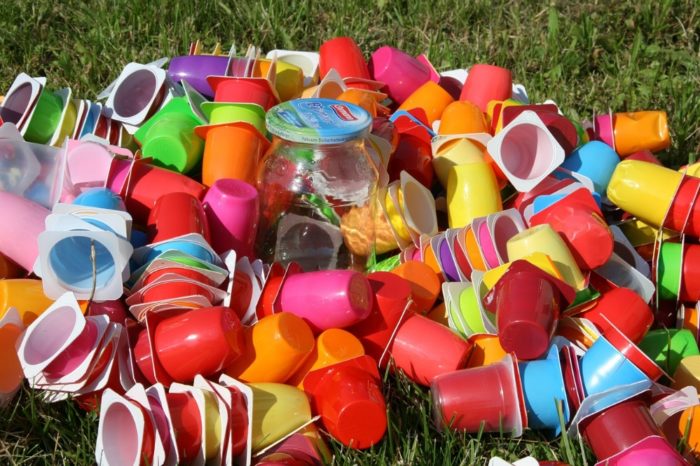Which everyday products might be affecting your health negatively?
The dangers of a kind of chemical known as phthalates to our health have been known for a long time.
Phthalates are chemicals which are often used in order to ‘plasticise’ or make softer, plastics, such as food containers, fast food containers and drinks bottles. They are found in perfumes, personal care products, vinyl flooring, building materials, shower curtains, solvents, medical tubing and bags, insecticides, hair spray, nail varnish, moisturisers, shampoo, plastic plumbing pipes, adhesives and more. They can leach out into our food, enter our body through the lungs or skin via air pollution, involuntary inhalation of perfumes and personal care products or home building materials. The humble tea bag, where it contains plastic, may well contain phthalates. Sounding almost inescapable? It’s one reason they are often known as ‘the everywhere chemical’.

Phthalates are proven to disrupt our hormones, and as a result increase, for example, fertility issues, weight gain, thyroid issues, Type 2 diabetes, asthma/allergies. They are rampant in personal care products, which women may use more of and so be more affected by. They have also been linked to lower testosterone levels and sperm counts in men. If a plastic toy is soft, it is almost certain to contain phthalates unless the label specifically says it does not.
Unfortunately, once in the body, they can negatively affect babies in the womb, particularly boys. They have been linked with abnormal genital development and neurodevelopmental issues. Children at puberty are apparently also at increased risk. Higher levels of exposure in children are linked with allergies and inflammation in the airways.

A short insta reel from creator plateful.health that might be useful for starting conversations link.
Recent research
Research (Wang and Qian) was published in 2021 which made suggestions to governments and industry about lowering phthalate exposure to adults and children. This unsurprisingly suggested:
- Reassess and restrict high risk phthalate products (e.g. DEHP) in countries which have not yet done so, especially in products such as food packaging, PCPs, medical devices, things that might be sucked or ingested by babies, children and teens or that are used in products for pregnant or breastfeeding mothers.
- Phthalate alternatives (PA) with lower toxicity and leakage should be considered, especially, in the health care.
- Limited the use of phthalates in products which are frequently used and yet people are they are being exposed to toxic chemicals.
- Use safer alternatives which exist
- Use glass containers instead of plastics for food
- Avoid heating food in plastic containers
- Avoid using fragrance (perfume) that may contain phthalates
- Read personal care product labels for their presence
- Test drinking water routinely for phthalates
- Use phthalate-free gloves, utensils and packaging when processing food.
- Soft vinyl toys, old plastic toys and teething rings should be avoided
- Keep children away from waste sites of factors especially plastic manufacturers
- Measure the level of phthalates in nurseries, schools, hospitals and shopping centres.
- Raise public awareness of the dangers of phthalates amongst vulnerable members of the community and encourage them to avoid using plastics, especially ones with phthalates.

How can you spot phthalates on labels?
Knowing what you know now, how can you reduce exposure and help inform vulnerable friends, family members and clients?
Unfortunately, products may not state they contain phthalates.
Zero Breast Cancer https://www.zerobreastcancer.org/en/ are one of the organisations that believe that phthalates in personal care products are one of the factors driving an increase in breast cancer. As a resource, they point to research carried out by CHE which noted a decrease in malignant cell behaviour when breast cancer survivors cut out all parabens and phthalates for just 28 days. Watch the webinar here https://www.healthandenvironment.org/che-webinars/96687 , you can also download a summary of this eye-opening community-based research.
It seems, in addition, that our exposure to hormone disrupting chemicals is also under estimated and, as a result, lower regulation ensues. If you want to know more about this, go here: https://www.healthandenvironment.org/join-us/blog/how-and-why-to-close-the-exposure-assessment-gap
Chemical naming
Chemical naming
If labels do disclose the presence of phthalates, these are apparently the eight most used phthalates:
BBP: butyl benzyl phthalate (LMW)
DBP: di-n-butyl phthalate (LMW) Most common phthalate added to nail polish
DEHP: di-(2-ethylhexyl) phthalate (HMW) Most widely-added phthalate to polyvinyl chloride (PVC) to make products flexible.
DEP: diethyl phthalate (LMW) Most common phthalate added to personal care products to enhance fragrance.
DiDP: di-isodecyl phthalate (HMW
DiNP: di-isononyll phthalate (HMW) Most common phthalate added as a softener in the manufacture of toys and childcare products, such as bath toys, drinking straws, and rubber ducks
DnHP: di-n- hexyl phthalate
DnOP: di-n-octyl phthalate (LMW)
What actions can you take?
According to Very Well health, these are the simple actions to take to reduce phthalate exposure:
· Actively choose to use natural personal care products
- Avoid PVC vinyl flooring/shower curtains. Wood, tile, concrete, or natural lino are better options. Cloth shower curtains are a better option than vinyl ones.
- Avoid toys made of plastic. Instead look for ones made from wood or organic cotton
- Are your air fresheners using fragrances with phthalates? Consider ones made with natural essential oils (be aware, if you have pets of the effects of any kinds of strong smells on them)
- Look for microwave-safe and phthalate-free containers/plastic wraps
- Reduce your consumption of fast food. Make your own fresh food at home with fresh ingredients
In addition, you could:
· Avoid tea bags containing plastics or go back to using loose leaf teas.
In addition, recent reports link specific low-cost Chinese-based websites with a lower quality manufacture and higher use of chemicals such as phthalates.
More and more people are waking up to the risks posed by chemical exposures to health. We hope that, in sharing this information, you become empowered to make choices that enhance wellbeing for yourself, your families, your friends and your clients.
References:
Edwards L, McCray N et al, Phthalate and novel plasticizer concentrations in food items from U.S. fast food chains: a preliminary analysis Journal of Exposure Science & Environmental Epidemiology volume 32, pages 366–373 (2022)
European Chemicals Agency https://echa.europa.eu/hot-topics/phthalates
Giuliani A, Zuccarinni M et al, Critical Review on the Presence of Phthalates in Food and Evidence of Their Biological Impact, Int J Environ Res Public Health. 2020 Aug; 17(16): 5655. doi: 10.3390/ijerph17165655
Very Well Health https://www.verywellhealth.com/phthalates-5216073
WebMD, https://www.webmd.com/a-to-z-guides/features/what-are-phthalates
Wang, Y and Qian H, Phthalates and Their Impacts on Human Health, Healthcare 2021 May; 9(5): 603. doi: 10.3390/healthcare9050603
Zero Breast Cancer, https://www.zerobreastcancer.org/